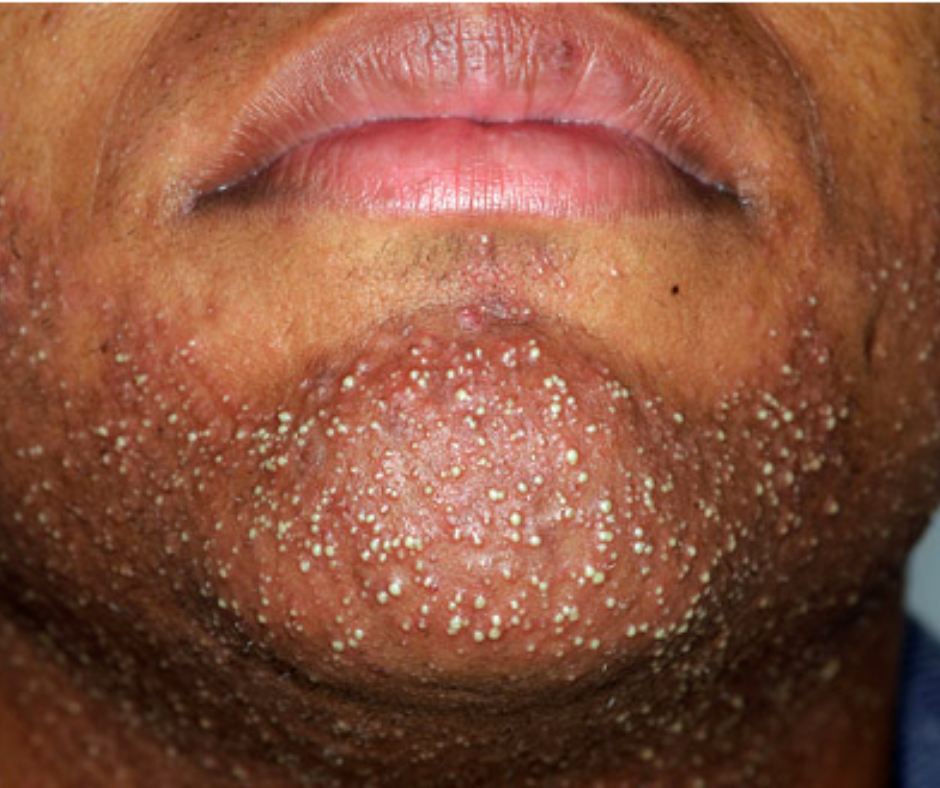Folliculitis barbae, a common dermatological condition, primarily affects hair-bearing areas typically exposed to shaving, such as the beard area in men. Often presenting as a tender, itchy papulopustular eruption around hair follicles, it can also occur in women who shave their legs and bikini areas. When folliculitis barbae becomes deeply rooted, it is referred to as sycosis barbae, which can cause permanent scarring and hair loss. The condition bears similarities to pseudofolliculitis barbae (PFB), particularly common among individuals with curly hair, such as African Americans, due to ingrown hairs.
The prevalence of folliculitis barbae is noted primarily among individuals with lighter skin types who shave regularly. However, it can also arise from laser hair removal or even in those who do not shave at all. The condition can be triggered by several factors, including bacterial infections mainly due to Staphylococcus aureus, or less commonly by viral or fungal agents. The condition might also emerge among athletes and those with compromised immune systems.
Clinically, folliculitis barbae manifests as small, inflamed bumps around hair follicles which may discharge pus or serous fluid. These symptoms are exacerbated by shaving, which can further irritate the skin. Among individuals with darker skin, the condition may present with more severe ingrown hairs, leading to more pronounced symptoms. Treatment typically involves measures to reduce bacterial colonization, such as using disposable razors or properly sanitizing shaving equipment. Topical or oral antibiotics may be prescribed for more severe cases.
Diagnosing folliculitis barbae generally does not require complex tests and can often be confirmed through clinical examination, possibly supported by dermoscopy. For persistent or unclear cases, swabs may be taken to identify the presence and sensitivity of bacteria or other pathogens. The condition’s differential diagnosis includes other forms of folliculitis, such as tinea barbae and eosinophilic pustular folliculitis, among others.
Overall, the management of folliculitis barbae aims to alleviate symptoms and prevent recurrence. The prognosis is generally good with appropriate treatment, although severe cases may lead to scarring or sycosis barbae if not adequately managed. For a detailed exploration of folliculitis barbae, visit DermNet NZ.


